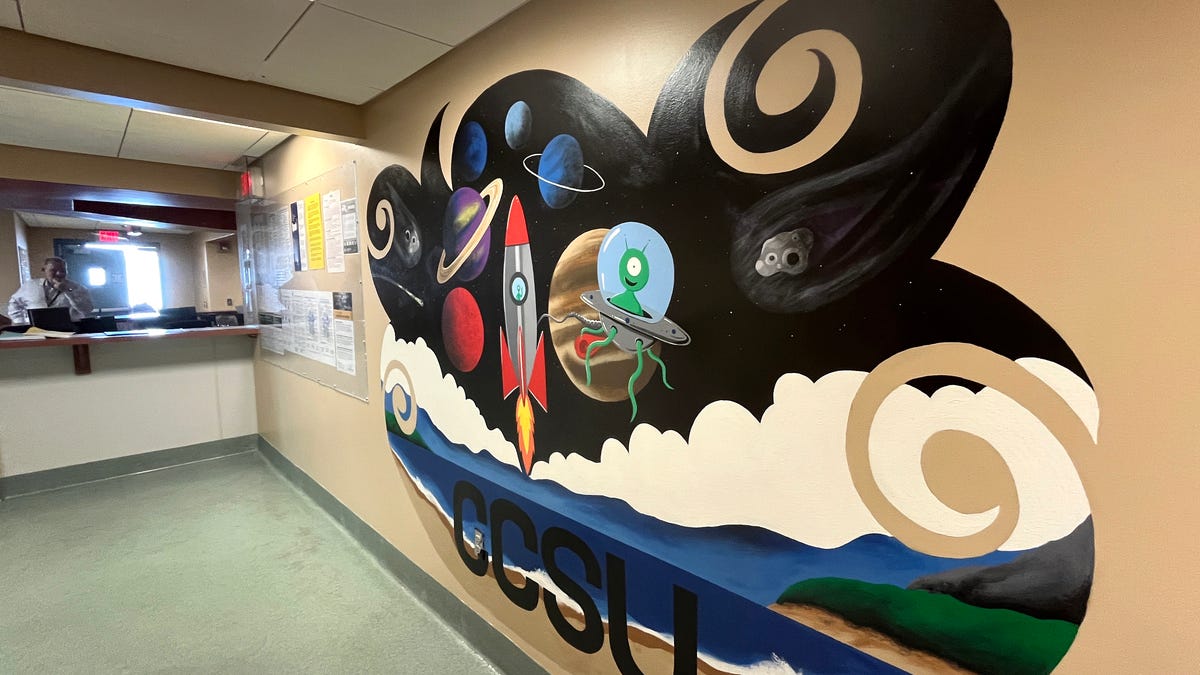
Circles of Care offers services in behavioral health care in Brevard
Circles of Care, inc. offers many services in behavioral health care, and has multiple locations in Brevard County.
Florida’s Baker Act allows for involuntary examination of individuals in a mental health crisis for up to 72 hours.Patients at receiving facilities follow a strict daily routine of meals, medication, and therapy sessions.After the 72-hour hold, patients are discharged with a follow-up care plan but may face challenges accessing long-term mental health services.
You’ve known anxiety before — the restless nights, the low ebb of sadness — but lately it feels heavier.
On Monday, you walk out of your job without notice. By Tuesday, you snap at a friend for simply asking, “What’s wrong?” That night, sleep won’t come. Dark thoughts loop until your chest tightens and each breath feels thin.
By Friday, you’re unraveling. You shout at your elderly parents, threaten to end your life, and storm out. You drive aimlessly, then return to an apartment that mirrors your mind — dishes stacked in the sink, laundry slumped across the couch, silence pressing in. You cry until morning and stop answering calls.
Fearing you may be in danger; your parents request a welfare check. When officers arrive, they see what your family already knows — you’re in crisis and need immediate help. They speak softly. No handcuffs; there’s no need, you’re being cooperative. In the back seat, you watch streetlights slide past as one officer radios ahead to a designated receiving facility: a Baker Act transport is on the way.
FLORIDA TODAY recently toured Circles of Care in Melbourne, one of two main Baker Act receiving facilities in Brevard, to learn more about what happens during that 72-hour hold.
The first hours
At the locked entrance of Circles of Care, an officer completes the handoff to intake staff. It’s a quick exchange: names, time, the basics. The waiting area is sparse, about 10 chairs line the room watched over by a camera in the corner. Behind an observation window, staff keep watch as an intake specialist approaches with a clipboard.
They assess your mood, risk factors and medical history to determine the severity of your crisis. They take your vitals and ask if you’ve been sleeping — and if you’ve thought about harming yourself.
“Think of it like an emergency room,” said Circles of Care CEO and President Stephen Lord. “There will often be times when there is little to no wait and people will be seen immediately. There will also be times when multiple people arrive at once, whether brought in by ambulance, law enforcement, or walk-ins. But in general, people should be seen within 45 minutes of arrival, with most seen more quickly.”
Once intake is complete, you’re escorted down a long hallway, assigned a unit and introduced to your care team — nurses, social workers and support staff — who explain the schedule, rules and routines.
Inside the unit
The large crisis stabilization unit includes two open common areas — one for men, one for women. Each is furnished with tables and chairs, separated by a nurse’s station. The furniture is heavy and filled with sand to prevent it from being moved — or thrown. Beyond the station, a large window overlooks a few picnic tables situated under a covered patio and a grassy courtyard surrounded by a high concrete wall.
The room is cold, a common theme in patient and staff feedback, according to Circles of Care Executive Vice President and Chief Operating Officer Tonya Dix. The unit keeps extra blankets on hand for anyone who needs to warm up.
A mental health technician walks the room, keeping a watchful eye on patients, offering support and taking note of any changes in behavior or mood on an iPad. All interactions between patients are closely monitored for appropriateness. For safety reasons, physical contact is not allowed. And to protect their privacy, patients are also discouraged from exchanging contact information.
Your shared room is simple: three twin beds, a bathroom, a window for natural light. There are no sharp edges or personal décor. Even the door frames are slanted at the top to prevent self-harm. You received a blanket and pillow when you first arrived but soon discover that sheets are not permitted on the unit due to ligature risk.
“Room assignments are made thoughtfully, taking into account patient personalities and the likelihood of a good match,” Dix said. “Patients generally do well in shared rooms, with minimal complaints about noise or snoring.”
If, for example your roommate snores relentlessly throughout the night, Dix said they make every effort to accommodate room change requests, depending on bed availability. However, she added, “ear plugs are always available upon request.”
You’re allowed two changes of clothes. Belts, strings and underwire bras aren’t permitted. Outside food and hygiene products are also prohibited — everything you need is provided by the facility. Washers and dryers are available on-site for laundering and there’s also a large supply of community-donated clothing and shoes in a variety of sizes, including disposable underwear and socks.
A strict routine
The next few days, a strict schedule is observed — awake at 7 a.m., brush your teeth, wash your face and have your vitals taken. Then it’s breakfast at 8 a.m. followed by medications at 9 a.m. and a community meeting at 9:30 a.m.
After that you meet with your treatment team to learn about your individualized plan, including goals, therapeutic options and information about any medications prescribed. Lunch is at noon.
According to Dix, a common complaint is the portion size of meals and the variety of food — with patients often describing meals as typical “hospital food.” But she said, “When patients voice complaints about food, we will provide them with larger portions or offer a more palatable option.”
Between 2 and 4 p.m., you’re allowed about 30-minutes of fresh air in the courtyard. At 4 p.m. vital signs are taken again and then it’s quiet time until 5 p.m. followed by dinner at 5:30 p.m.
During a meeting with your nurses at 6 p.m. you receive guidance on stress management techniques, coping skills and community resources. Showers are taken from 7 to 8 p.m., followed by a snack at 9 p.m. and then it’s lights out by 10 p.m.
“Maintaining a consistent daily routine is crucial for individuals experiencing a psychiatric crisis,” Dix said. “It provides stability, reduces anxiety, and supports the recovery process.”
A day inside the hold
Mornings are often the most stressful time on the unit as patients are still settling into an unfamiliar routine, and many would rather sleep a little longer than 7 a.m. For newcomers, those early hours can feel especially heavy — waiting for a provider, worrying about when they might be discharged.
“Overall, stress levels tend to be heightened during key moments such as admissions, while awaiting psychiatric evaluations, and during medical or psychiatric emergencies,” Dix said.
The hours might feel like they are crawling by. You sit in the common area surrounded by strangers — some watching TV, mostly game shows or other pre-programmed educational content. Anything that includes violence, drug use, or other “inappropriate themes” — such as horror movies, UFC/boxing fights, or law enforcement reality shows — is prohibited.
Some patients flip through magazines or chat idly. For some, the stillness can feel foreign.
“Most patients tend to be social, naturally gravitating toward peers with similar personalities and friendships often form during their stay,” Dix said. “While a few patients may be more reserved, it is uncommon for individuals to remain completely isolated.”
You were not allowed to keep your personal cell phone. But you can call your family using the facility’s landline. Visitors are permitted on specific days, offering brief moments of connection, reassurance — and extra clothes.
By the third day, you’ve spoken to a psychiatrist who asks careful questions. You meet again with a nurse to discuss a possible diagnosis. They suggest medication and go over its purpose, dosage and potential side effects. You listen to others’ stories and perhaps share a few of your own in group chats — and while it’s not exactly comforting, it can be a reminder that what’s happening to you, happens to other people too.
Discharge and the days after
When the 72-hour Baker Act period ends, staff can’t keep you unless you stay voluntarily or a court order extends the hold. Before discharge, your team reviews your case and connects you to outpatient programs, therapy and community services. You leave with prescriptions, follow-up appointments — and likely a mix of exhaustion and hope.
For some, their first involuntary psychiatric hold, won’t be their last. According to data from the Department of Children and Families, between 2021 and 2024 — 29% of both children and adults were Baker Acted two or more times and 4% experienced six or more holds within that three-year span.
In the weeks that follow, stability depends on access and follow-through. People often face waitlists, insurance pre-authorizations and multiple calls to arrange appointments and treatment. Families may have to juggle transportation, work schedules and new routines. The Baker Act addresses the crisis, but it’s not a cure-all — and the system can sometimes feel slow and fragmented.
“Early planning helps identify and mitigate potential risks of relapse or deterioration after discharge through appropriate interventions,” Dix said. “Involving the patient from the start encourages their active participation in their recovery journey.”
This reporting is supported by a Journalism Funding Partners grant. Mental Health Reporter Jennifer Torres can be reached at JMTorres@gannett.com.

